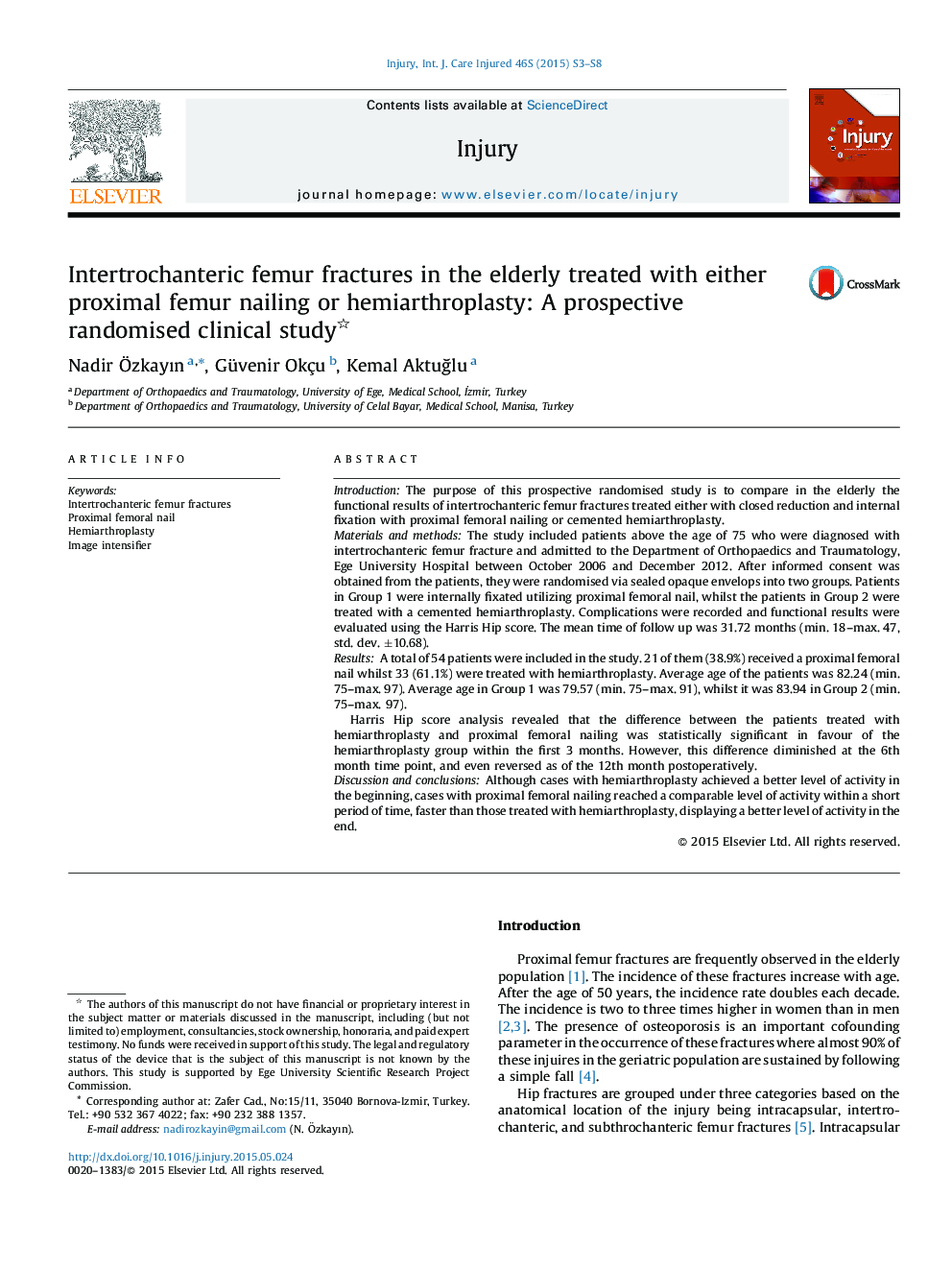| Article ID | Journal | Published Year | Pages | File Type |
|---|---|---|---|---|
| 3239249 | Injury | 2015 | 6 Pages |
IntroductionThe purpose of this prospective randomised study is to compare in the elderly the functional results of intertrochanteric femur fractures treated either with closed reduction and internal fixation with proximal femoral nailing or cemented hemiarthroplasty.Materials and methodsThe study included patients above the age of 75 who were diagnosed with intertrochanteric femur fracture and admitted to the Department of Orthopaedics and Traumatology, Ege University Hospital between October 2006 and December 2012. After informed consent was obtained from the patients, they were randomised via sealed opaque envelops into two groups. Patients in Group 1 were internally fixated utilizing proximal femoral nail, whilst the patients in Group 2 were treated with a cemented hemiarthroplasty. Complications were recorded and functional results were evaluated using the Harris Hip score. The mean time of follow up was 31.72 months (min. 18–max. 47, std. dev. ±10.68).ResultsA total of 54 patients were included in the study. 21 of them (38.9%) received a proximal femoral nail whilst 33 (61.1%) were treated with hemiarthroplasty. Average age of the patients was 82.24 (min. 75–max. 97). Average age in Group 1 was 79.57 (min. 75–max. 91), whilst it was 83.94 in Group 2 (min. 75–max. 97).Harris Hip score analysis revealed that the difference between the patients treated with hemiarthroplasty and proximal femoral nailing was statistically significant in favour of the hemiarthroplasty group within the first 3 months. However, this difference diminished at the 6th month time point, and even reversed as of the 12th month postoperatively.Discussion and conclusionsAlthough cases with hemiarthroplasty achieved a better level of activity in the beginning, cases with proximal femoral nailing reached a comparable level of activity within a short period of time, faster than those treated with hemiarthroplasty, displaying a better level of activity in the end.
